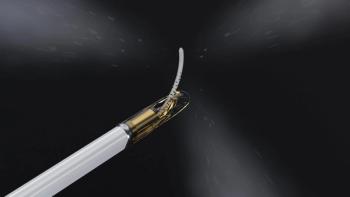
RSNA Preview: Trials examine added value of advanced breast imaging strategies
Themes emerging from breast imaging abstracts at the upcoming RSNA include the increased use of breast MRI, full-field digital mammography versus film-screen mammography, and more.
Themes emerging from breast imaging abstracts at the upcoming RSNA include the increased use of breast MRI, full-field digital mammography versus film-screen mammography, and more.
There is a special session on Tuesday looking at breast cancer risk: how to measure it and what to do with it.
“I think radiologists are going to get increasingly asked if patients need screening with MRI,” said Dr. Jennifer Harvey, RSNA committee chair on breast imaging and associate professor of radiology at the University of Virginia.
The question will be whether patients are at high enough risk to qualify for MRI, she added.
Also presented at the RSNA meeting will be an update on the American College of Radiology Imaging Network trial on the Digital Mammographic Imaging Screening Trial (DMIST). Dr. Etta Pisano from Chapel Hill, NC, will discuss why digital mammography turned in better results for women with dense breasts, Harvey said.
A presentation on Monday Dec. 1 titled “The Data The New York Times Article Was Calling for: Does the Transition from Film-Screen to Digital Mammography Increase Callback Rates and Biopsy Rates?” by Dr. Kristin Marie Dittmar, from the University of California, Los Angeles, should also prove interesting, according to Harvey.
Other hot subjects in breast imaging include digital tomosynthesis and the cross-sectional methods of CT, PET, and gamma imaging.
“There are an increased number of abstracts -- and really good ones, too. We’re in the next phase of development,” Harvey said.
As breast MRI matures, researchers know it is useful for screening women at high risk of breast cancer, but what about the women who are moderate risk? Harvey said.
“We know mammography is not doing a good job for them, so these ancillary screening techniques may be less expensive and a more readily available tool,” she said.
Ultrasound elastography is still a hot topic, according to Harvey. The latest question is whether whole-breast ultrasound is better than handheld.
Other breast health topics presented at the RSNA meeting will include diffusion-weighted MR imaging and which lesions to take out after core biopsy.
Newsletter
Stay at the forefront of radiology with the Diagnostic Imaging newsletter, delivering the latest news, clinical insights, and imaging advancements for today’s radiologists.



























